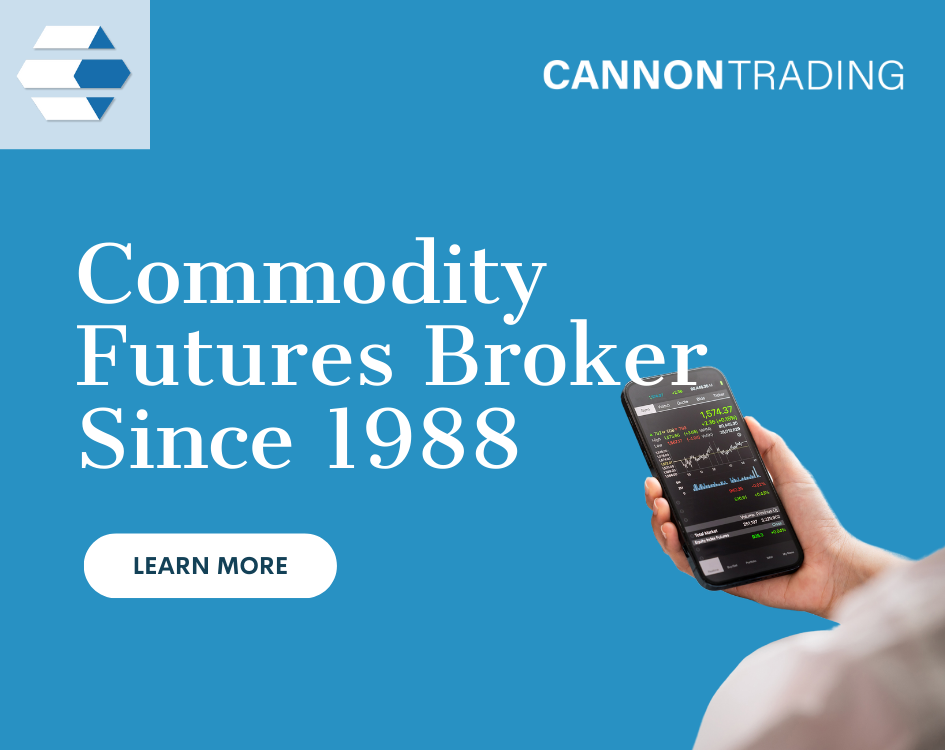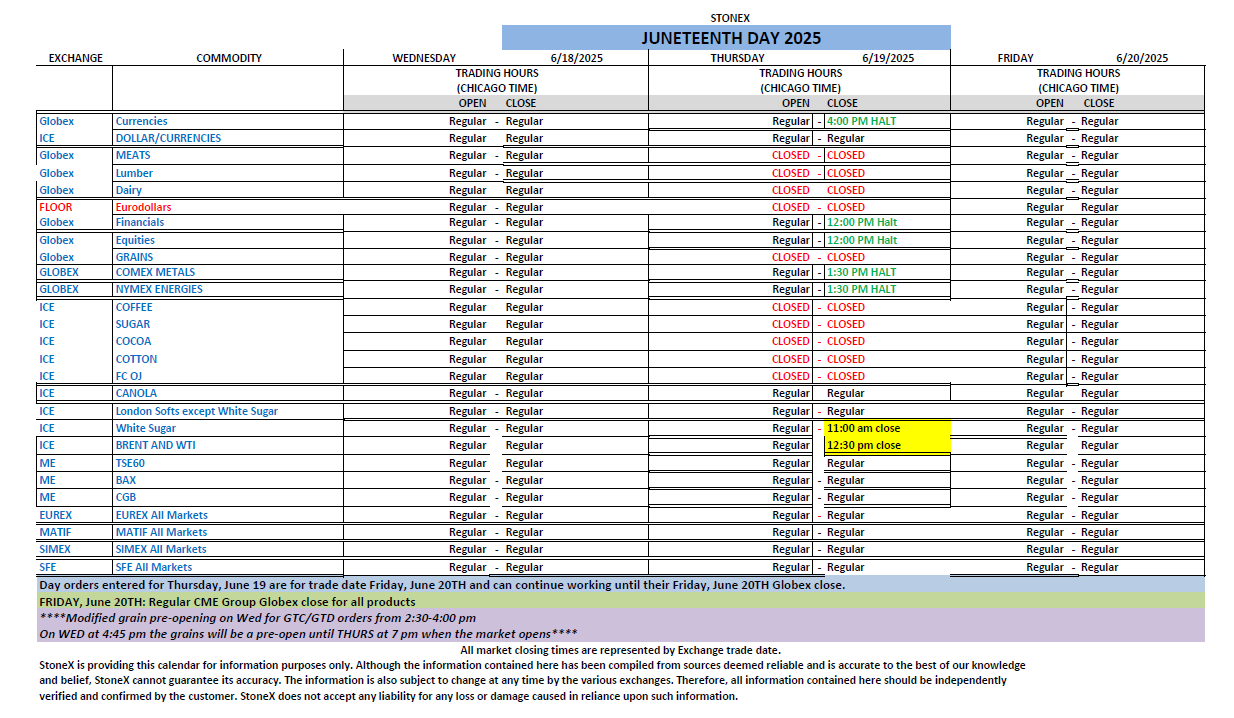
Juneteenth Modified Schedule Tomorrow

|
||||||||||||||||||||||||||||||||||||||||||||||||||||||||||||||||
|
||||||||||||||||||||||||||||||||||||||||||||||||||||||||||||||||
|
Whether a person or a firm, a commodity broker is there to help you with your commodity trading needs. They either have a team of commodity traders under them or a platform that they manage electronically.
For all commodity trading beginners, commodity brokers are a point of contact that can be approached with individual commodity trading needs. To do good in commodity trading, it is important to take the advice of the commodity broker seriously. Under this category archive we discuss everything about commodity brokers and their expert skills.
We at Cannon Trading are there to help your commodity trading requirements. Whether you want to consult us and seek advice or to play a more active role for you in the markets, we are there to serve you with the best of our services. It is essential for you to choose only a certified broker and so, you can always trust us when it comes to qualifying on all quality parameters. No matter which commodity interests you, our trading experts give you the right and real-time advice always. Read our archive; share posts with your friends; or bookmark this page to stay up-to-date on commodity brokers.


|
||||||||||||||||||||||||||||||||||||||||||||||||||||||||||||||||
|
||||||||||||||||||||||||||||||||||||||||||||||||||||||||||||||||
|
In the world of futures trading, access to cutting-edge tools, reliability, and seamless execution are not luxuries—they’re necessities. That’s precisely where the CannonX powered by CQG trading platform distinguishes itself. Built upon the backbone of CQG’s advanced technology infrastructure, CannonX offers traders and brokers a powerful, institutional-grade futures trading platform that seamlessly combines speed, functionality, and sophistication.
Below, we’ll explore how CannonX powered by CQG trading platform leverages CQG’s renowned capabilities. What differentiates CannonX from the competition, and how Cannon Trading Company’s legacy of excellence makes this platform a compelling choice for traders serious about navigating today’s futures markets.
At the heart of CannonX powered by CQG lies one of the most respected names in the financial technology space—CQG. For over four decades, CQG has been developing and refining some of the industry’s most robust trading, charting, and market data tools. Their high-speed infrastructure is trusted globally by institutional traders, professional brokers, and independent retail clients.-Nice!
What makes CQG technology exceptional is its commitment to low-latency order routing, direct market access (DMA), and integrated, real-time market data feeds. The integration of CQG’s infrastructure into CannonX means that traders gain access to a futures platform that’s engineered for speed, reliability, and depth. This is a platform built not just for execution—but for precision trading, where milliseconds and clarity can mean the difference between profit and loss.
What Sets CannonX Apart From Other Futures Trading Platforms
The CannonX futures platform is not simply another trading screen—it’s a comprehensive suite tailored to futures professionals and active traders. Several characteristics help it stand tall among the competition:
The CannonX futures platform has been accessible to both individual traders and institutional clients for the past year. Its ongoing evolution reflects Cannon Trading Company’s commitment to staying ahead of the curve in the ever-competitive world of futures trading. Since its introduction, CannonX has been continuously refined, incorporating user feedback and the latest in CQG advancements.
This is a battle-tested futures platform trusted by brokers and traders around the globe.
Trade execution can make or break a strategy. The CannonX powered by CQG trading platform simplifies and streamlines execution through the following key features:

The technology is important—but so is the team behind it. Here’s why Cannon Trading Company is the ideal partner for traders looking to maximize the value of a top-tier platform.
CannonX powered by CQG trading platform is about performance without compromise—accessible to all, engineered for the elite.
The world of futures trading is evolving rapidly. With increased volatility, faster news cycles, and greater demand for precision, only the most advanced tools will give traders the edge. CannonX powered by CQG is a must-have for traders who are serious about performance, reliability, and scalability.
By pairing cutting-edge CQG infrastructure with Cannon Trading Company’s white-glove service, you get a futures platform that’s not only powerful—but empowering.
If you’re seeking a platform that:
Then the CannonX powered by CQG trading platform is your solution. It brings together everything traders need: speed, insight, control, and confidence.
Whether you’re day trading crude oil, hedging agricultural positions, or building a diversified strategy across global markets, CannonX is a futures platform that delivers.
Ready to start trading futures? Call us at 1(800)454-9572 (US) or (310)859-9572 (International), or email info@cannontrading.com to speak with one of our experienced, Series-3 licensed futures brokers and begin your futures trading journey with Cannon Trading Company today.
Disclaimer: Trading Futures, Options on Futures, and retail off-exchange foreign currency transactions involve substantial risk of loss and are not suitable for all investors. Past performance is not indicative of future results. Carefully consider if trading is suitable for you in light of your circumstances, knowledge, and financial resources. You may lose all or more of your initial investment. Opinions, market data, and recommendations are subject to change at any time.
Important: Trading commodity futures and options involves a substantial risk of loss. The recommendations contained in this article are opinions only and do not guarantee any profits. This article is for educational purposes. Past performances are not necessarily indicative of future results.
This article has been generated with the help of AI Technology and modified for accuracy and compliance.
Follow us on all socials: @cannontrading

|
||||||||||||||||||||||||||||||||||||||||||||||||||||||||||||||||
|
||||||||||||||||||||||||||||||||||||||||||||||||||||||||||||||||
|

|
|||||||||||||||||||||||||||||||||||||||||||||||||||||||
|
|||||||||||||||||||||||||||||||||||||||||||||||||||||||
|

|
|||||||||||||||||||||||||||||||||||||||||||||||||||||||||||||||||||||||||||||||||||||||||||||||
|
|||||||||||||||||||||||||||||||||||||||||||||||||||||||||||||||||||||||||||||||||||||||||||||||
|


|
||||||||||||||||||||||||||||||||||||||||||||||||||||||||||||||
|
||||||||||||||||||||||||||||||||||||||||||||||||||||||||||||||
|


|
||||||||||||||||||||||||||||||||||||||||||||||||||||||||||||||
|
||||||||||||||||||||||||||||||||||||||||||||||||||||||||||||||
|

|
||||||||||||||||||||||||||||||||||||||||||||||||||||||||||||||
|
||||||||||||||||||||||||||||||||||||||||||||||||||||||||||||||
|

|
|||||||||||||||||||||||||||||||||||||||||||||||||||||||||
|
|||||||||||||||||||||||||||||||||||||||||||||||||||||||||
|


Trading Futures, Options on Futures, and retail off-exchange foreign currency transactions involves substantial risk of loss and is not suitable for all investors.
You should carefully consider whether trading is suitable for you in light of your circumstances, knowledge, and financial resources. You may lose all or more of your initial investment.
Opinions, market data, and recommendations are subject to change at any time.
|
|
|